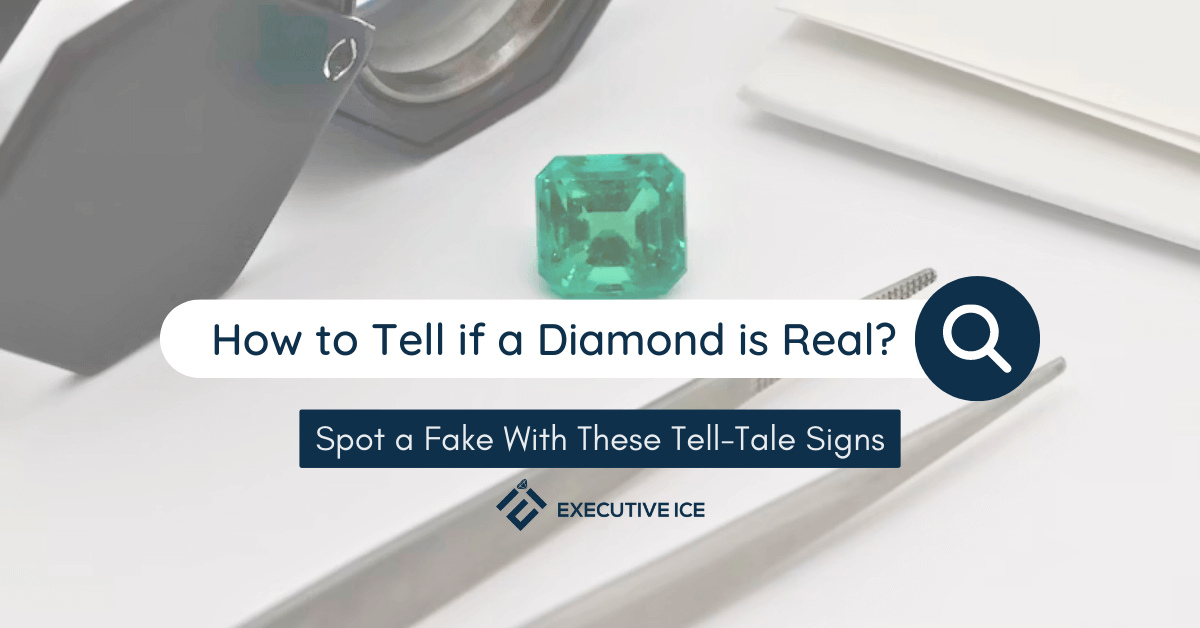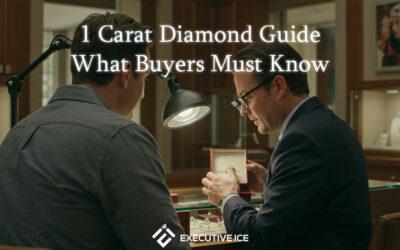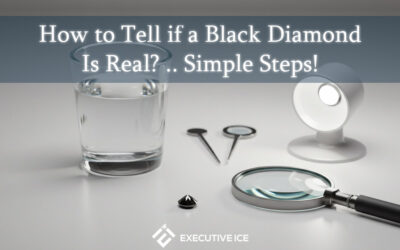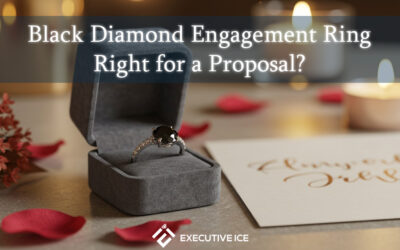Picture this: You’re planning the perfect proposal to the love of your life. Hours spent poring over ring designs, secretly trying to determine their ring size, saving up your hard-earned money, rehearsing your heartfelt speech – all in pursuit of that life-changing “Yes” and a lifetime of happiness together.
But imagine if, after you’ve orchestrated the perfect proposal, you discover the diamond on that ring was counterfeit? How would that make you feel? How would your partner react? What steps would you need to take next?
Let’s not delve too deep into these unsettling scenarios. Instead, let’s focus on ensuring you never find yourself in such a situation.
Looking for a quick way to avoid this? Consider reading our comprehensive guide comparing Top Diamond Jewelry Retailers, and familiarize yourself with our tips on How to Buy Diamonds Like a Pro.
While the majority of gemstone merchants are honest and authentic, there are a few unscrupulous ones who peddle counterfeit diamonds, preying on uninformed customers.
Here’s a guide that will prove invaluable the next time you decide to invest in diamond jewelry.
Before we start, one thing to confirm here: Lab-created diamonds should not be mistaken for fake diamonds. Quite the contrary, lab-grown diamonds are real diamonds, identical in composition to their naturally-mined counterparts.
How to Spot a Fake Diamond Before Your Purchase
Though most individuals aren’t diamond experts, there are some simple tips and techniques that can help you identify a fake diamond in no time. Equip yourself with a loupe, some sandpaper (not always necessary, but handy to have), and a pleasant demeanor to ensure the jeweler’s patience as you carry out your assessments.
1. The Loupe Test
A loupe is a compact magnification device used by jewelers, capable of enlarging objects up to ten times their original size. If you don’t have one at your disposal, you can always courteously request the store to let you use theirs.
So what should you be looking for when examining the stone?
- First and foremost, keep an eye out for any imperfections in the carbon. Genuine diamonds are products of nature, which means their carbon components will invariably have minor flaws. These irregularities do not detract from the stone’s value; rather, they validate its natural origin. Note that spotting such flaws can be more challenging when examining a high-grade clarity diamond (VS and flawless).
- Next, inspect its edges. Authentic diamonds will exhibit sharp edges, whereas counterfeit ones will have rounded ones.
- Lastly, if you’re buying a ring, assess the metal on which the diamond is set. Genuine diamond rings are usually matched with gold or platinum bands, whereas fake diamonds are more likely to be set on inexpensive metals like steel.
2. Perform the Fog Test
Attempt to fog up your diamond by exhaling hot air onto it, similar to how bathroom mirrors mist up from shower steam or glasses fog when leaning over a steaming bowl of soup. If your diamond fogs up in the same way, that’s a red flag. An authentic diamond won’t fog up as it doesn’t retain heat.
3) The Refraction Test
Diamonds are known for their intense refraction of light, which gives them their signature sparkle and prevents you from seeing through them. To perform this test, place your loose stone on a printed page, such as a newspaper or magazine.
If you can discern the printed words through the stone, it’s likely not a genuine diamond.
If the diamond in question is mounted rather than loose, ensure that you can’t see the setting when looking directly through the diamond.
4) The Sparkle Test
While diamonds are renowned for their sparkle, caused by intense light refraction, some imitation diamonds also sparkle. How can you distinguish the real deal from a fake, then? Begin by holding your diamond up to the light and observing its sparkle.
Inside the diamond, you should notice a mix of gray and white sparkles (referred to as “brilliance”). Upon reflecting off an external surface, it should project a range of rainbow colors. Moreover, inspect the diamond under UV light. A genuine stone should emit a blue glow.
Bear in mind that the intensity of this blue color depends on the diamond’s fluorescence grade; if the grade is ‘none’, the blue glow will be very faint or even non-existent.
5) Rub it With Sandpaper (or at least, try)
It’s highly unlikely that a jeweler would permit this test, understandably, but if given the chance, try rubbing the diamond gently with sandpaper. Of course, be extremely cautious if the diamond is mounted to avoid scratching the setting!
Diamonds are recognized as one of the hardest substances on earth and are impervious to scratches from abrasive surfaces. So, if you observe scratches on the stone after the sandpaper test, it’s likely a counterfeit diamond.
How to Tell if Diamonds Are Real After The Purchase
Imagine: You’re basking in the glory of a newly bought diamond or the generosity of a diamond gift, but a niggling question keeps creeping into your mind. “Is this sparkling gem truly genuine?”
You might not have had the opportunity to scrutinize your diamond before it found its way into your hands, but fear not – there are ways to investigate its authenticity post-purchase. Brace yourself for a home-based diamond detective adventure!
1. Water Test
Picture the Titanic, a marvel of density, effortlessly sinking to the abyss. Now consider your diamond: it shares a similar property. With a remarkable density of 3.5 (compared to the modest ~1 for water), a real diamond plunges straight to the bottom of a water container, no pit stops.
Beware, however: some crafty imposters, like quartz, may fool you with a slower descent, while moissanite can match a diamond’s speed-dive. This means the water test isn’t foolproof, but it’s a good first step in our journey of authentication.
2. Heat Test
Now, let’s uncover the diamond’s superhero-like quality: its extraordinary resilience. Diamonds are like the indestructible heroes of the mineral world, withstanding heat and cold in ways that would make mere mortal stones crumble.
To put your stone to the test, give it a heat-bath for around 20-30 seconds. If it cracks or shatters, it’s an imposter. If it doesn’t, then prepare for the sudden chill of cold water. Surviving this abrupt temperature change without a crack or shatter may well mean you’ve got an authentic diamond sitting in your palm.
Remember, these tests are only the tip of the authenticity iceberg, providing a basic level of reassurance. But if you’re still skeptical, consider getting your diamond professionally appraised. No matter the outcome, exploring the truth about your gem can be an adventure in itself!
If It’s not a Diamond Then What it is?
Okay, you’ve diligently conducted the tests and found out that your precious stone isn’t a diamond. But what could it possibly be?
The world of gemstones offers a plethora of look-alikes. Let’s delve into some of these fascinating doppelgängers:
- Moissanite: Often considered the diamond’s most convincing stand-in, Moissanite, a rare mineral itself, mimics the hardness and sparkle of a diamond. However, its inner radiance paints a rainbow spectrum, deviating from the cool, gray-white light of a diamond.
- White Sapphire: Popular in the world of jewelry, white sapphires bear a striking resemblance to diamonds. Although they lack the distinctive brilliance of a diamond, their delicate appeal isn’t easily dismissed. But beware, they are more prone to scratches.
- White Topaz: While topaz generally adorns the palette of yellows, browns, reds, and pale grays, a rare white variant can imitate the diamond’s allure. But don’t be fooled, it’s not as tough as a diamond and tends to wear down rapidly.
- Cubic Zirconium: This widely popular crystalline avatar of zirconium dioxide may not match the diamond’s lustre or toughness, but its high density and clarity make it a convincing look-alike. Yet, its overly perfect carbon structure gives it away when compared to a genuine diamond.
- Lab-created Diamonds: Now, this is where it gets tricky. Technically, lab-created diamonds ARE diamonds, but they’re not as treasured as their natural counterparts, and consequently, they’re sold for significantly less. Look for overly perfect carbon structures and sharp edges to distinguish them from natural diamonds.
Now that you’re armed with this knowledge, you could spot a diamond impostor from a mile away. Use this wisdom wisely, and try not to shatter anyone else’s illusion if you notice their gem is a faux. The golden rule remains: always purchase your diamonds from a reputed source. Better yet, opt for renowned online retailers like James Allen, Blue Nile, or the quality-driven Whiteflash.




